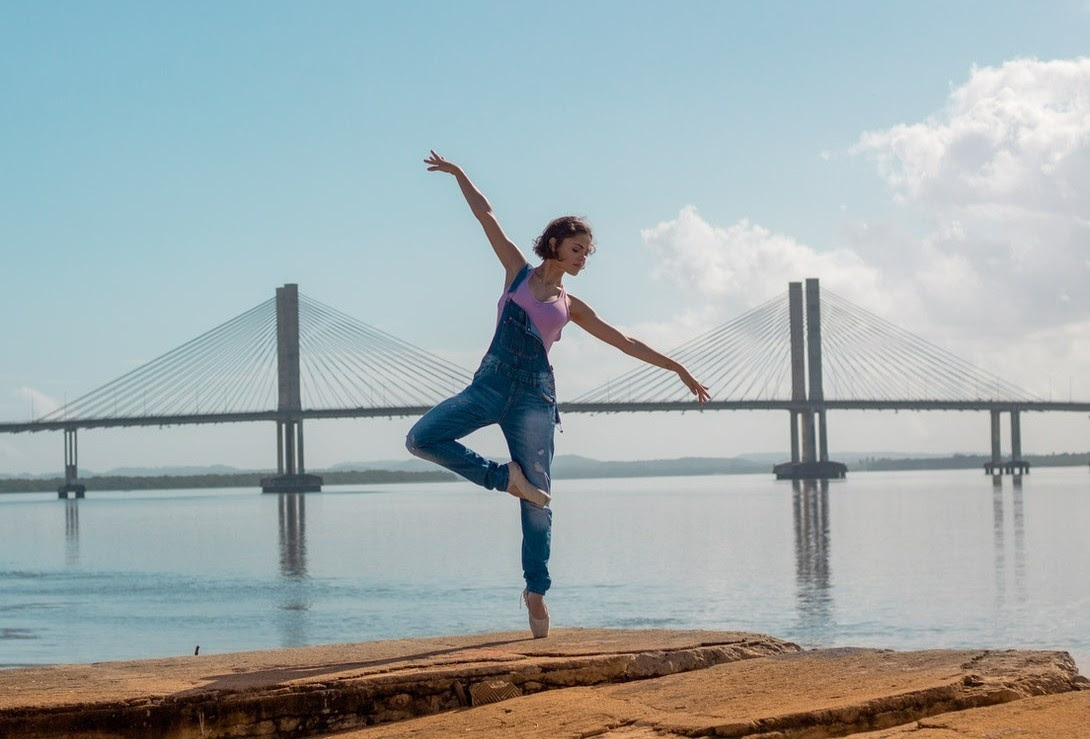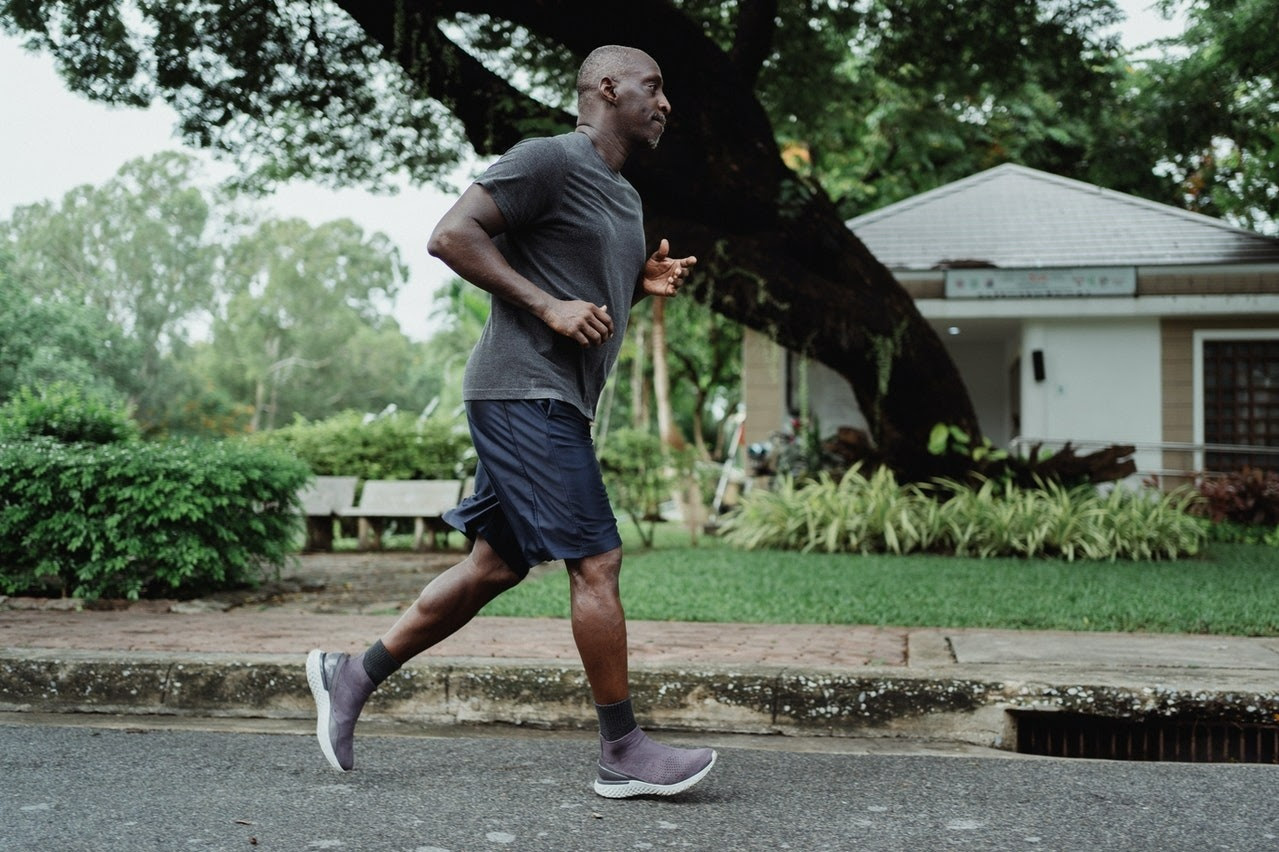Better Balance
You probably have never heard of him before, but chances are, you’ve seen an example of what he did for a living. His name was Eric Brenn and in the 1950’s and 60’s he was the best in the business. He was so good at what he did, he made it on national television and inspired a generation of performers. It was February, 1969 when Brenn made his national debut on the famous Ed Sullivan Show. He appeared on stage in a snazzy black suit and bow tie with a stack of dinner plates in his arms along with a number of long sticks.

Then with a coy smile and a wave of his hand, loud circus music began to play as he carefully set one plate on top of a wooden stick and spun it with the flick of his finger. He repeated this with two, three, four and five plates, all now, mounted on top of sticks on a dinner table, all spinning in rhythmic unison. The audience was thrilled! Brenn, the consummate showman, smiled from ear to ear, bowed to the camera and studio audience taking in their thunderous applause. But this was only the beginning. Brenn’s respite was short as the plates began to wobble. Still smiling, Benn motioned to the audience as to excuse himself and began to run back and forth spinning all the plates, busily trying to keep them from crashing to the floor. If that wasn’t enough, he then began to spin additional dinner plates on top of the table where the sticks were mounted.
Eight additional dinner plates now were spinning like tops along with the five others. Fourteen plates in all. The applause from the crowd was deafening, as Brenn smiled, then hurriedly yet masterfully, ran back and forth to the aid of his spinning, wobbling plates.
Do you ever feel like Eric Brenn? Crazily running from one responsibility to another trying to keep everything up in the air, everything going? You know: work deadlines, family obligations, finances, bills, debt, charitable work, social commitments, college tuition, aging parents, medical and dental needs, car repairs - you get the picture, right? Spinning plates, exhausted and stressed, who has time to breathe or smile or, for that matter, go for a walk? Before you can add another plate (such as more activity) or anything else to your plate it’s important to take care of the one balancing everything-YOU!

3 STEPS TO BETTER BODY BALANCE
1. Understand the definition & importance of physical balance:
The dictionary defines balance as “a physical equilibrium or stability produced by even distribution of weight on each side of the vertical axis.” Whew! That’s a mouthful! While it sounds fancy, this definition is a bit limited and too technical sounding for my liking. I prefer to view it as one’s ability to maintain a center of gravity. Our body will constantly try to find a ‘center’ or equilibrium - at all times whether we are standing still or moving. An intricate interconnection between brain, inner ear, nervous system, muscles, ligaments and tendons are all working together in perfect harmony to help your body stay upright.
The simple skill of balancing your body when standing on one foot or climbing out of a truck or even walking is dependent upon an intricate communication system between your brain, nervous system, muscles, ligaments and tendons. It’s called, “Proprioception” - your body’s unconscious ability to interpret messages about the position of your body and movement. This amazing ability allows you to sense which muscles to activate and contract to achieve a desired motion or position - without even thinking about it (like raising your arm to scratch your head). Unfortunately, if we don’t actively use this system, it becomes weaker and slower and movement becomes more difficult. By practicing “balance training” you can improve this skill significantly.
Movement patterns and skills (like riding a bike or driving a car), which once seemed daunting, are now simple and automatic, requiring little thought to execute. By training your balance you can improve proprioception, coordination, strength, agility and master more complex movements (think of an athlete catching a ball with one foot in the air, one on the ground and the rest of his/her body parallel to the field.) Balance is the foundation to all human movement. Your ability to balance your body impacts all of your daily activity as well as your ability to perform more complex movements.
2. Understand how aging impacts balance:
Have you ever heard the phrase, “If you don’t use it, you’ll lose it?” Well when it comes to your balance - this most certainly rings true. Research indicates as we grow older our ability to balance our body, both when still or when in motion diminishes significantly.
Losing your balance: Believe it or not, your natural ability to balance your body (when standing or moving) begins to decline after the age of 25! How fast it declines depends upon how much you move your body and practice balancing. By practicing balance training you can keep this necessary skill in peak shape.
According to the Centers for Disease Control and Prevention, one of every three Americans over the age of 65 falls each year. Elderly trips, falls and spills are primarily related to an inability and weakening of both static and dynamic balance. According to Debra Rose, Professor of Kinesiology and Co-director of the Center for Successful Aging at California State University, Fullerton observes, “As we grow older our balance and mobility becomes compromised, often for a variety of reasons: lack of lower body strength, altered sensory or motor function, certain medications or diagnoses, or a combination of these variables. “When a fall occurs, it often creates such a fear that the older adult becomes even less active. Of course, this lack of physical activity creates even more mobility problems – making the likelihood of falls even more pronounced. It’s a downward spiral.”
While falls can be contributed to a number of issues related to aging such as: inner ear problems, vision challenges and mobility issues, the good news is research indicates simple moves - “balance training” - is a skill you can practice and can significantly improve your balance and reduce the risk of falling as well as bringing health, vitality and balance back to the body.

3. Know there are two types of “body” balance:
- Static balance: Your ability to maintain your center of gravity in a non-moving position (such as when seated upright on the edge of your chair or standing in line, is highly dependent on strong stabilizing structures such as ligaments, tendons and muscles.
- Benefit: The number one benefit to strong static balance is an ability to prevent falling when in a non-moving position-without it you wouldn’t be able to sit upright, stand or shift your weight from one foot to the other. Another strong benefit is a strong and healthy posture. By strengthening key stabilizing ligaments, tendons and muscles you can improve your body posture and alignment significantly-helping you look stronger, younger and healthier.
- Dynamic balance: Your ability to maintain balance when moving, such as walking, stepping over an object, jogging, jumping, cycling or dancing is ultimately dependent upon your body working in sync with your brain, vestibular system (vision and inner ear), nervous system, muscles and ligaments moving your body to help you change direction or perform a desired movement.
- Benefit: A strong sense of dynamic balance enhances your ability to be successful in any movement activity-from the simplest to the most complex. This type of balance allows you the ability to tie your shoes without falling, or change direction when jumping over a puddle or running to turn and catch a fly ball in the World Series.
Here’s the best part of balance training-you can perform it anytime of the day! So this week, make “Balance” a priority in your day and life.
To help you do this, check out our weekly RISE Together Today Moves on our Facebook page or in our Group Coaching program, to help you improve your balance - you’ll be very happy you did!
Here’s to a stronger day, a stronger life and a stronger you!
Coach Sean

